

The State of the Ireland Church—Prior to the Revival (Confession of 3 Ministers)
The First
Before the revival, our condition was deplorable. We were dead, cold, prayerless, worldly. Two times I tried a prayer meeting with elders, but failed—the people did not only not want to pray, they were almost hostile towards prayer meetings. They thought we were doing fine and that I was unnecessarily disturbing them.
The Second
There seemed, great coldness and deadness. I had preached the gospel faithfully, earnestly, and plainly, for eleven years; yet it was not known to me that a single individual had been converted.
The Third
The congregation was altogether Laodicean. The spiritual state was depressing and hopeless.
How the Revival Started
►November 1856: Mrs. Colville, a Baptist missionary from England, was influential in the conversion of a young man, James McQuilkin.
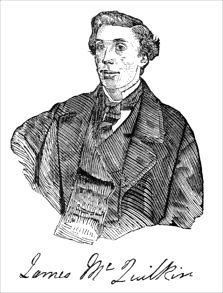
James McQuilkin
►McQuilkin commenced a prayer meeting every Friday night, beginning in September 1857, in a village schoolhouse near Kells (Northern Ireland) with 3 other young Irishmen (Jeremiah Meneely, Robert Carlisle and John Wallace). This was the same month that the 1857 Prayer Revival began in New York City. This is generally seen as the start of the Ulster Revival.
►The first conversion in answer to their prayers came on January 1, 1858, and then there were 5 praying. By the end of the year, 50 were praying together. Through 1858, innumerable prayer meetings started, and revival was a common theme of preachers.
►News of the 1857 Prayer Revival in New York arrived in Ulster. Several ministers were sent to verify the reports. Upon the ministers’ return to Ulster, their reports ignited a passion for prayer which spread everywhere.
►March 14, 1859: James McQuilkin and his praying friends organized a prayer meeting at the Ahoghill (aho hill) Presbyterian Church. Such a large crowd gathered that the building was cleared because the balcony was giving way from the weight of the crowd. Outside in the chilling rain, as a layman preached with great power, hundreds knelt in repentance. This was the first of many movements of mass conviction of sin.
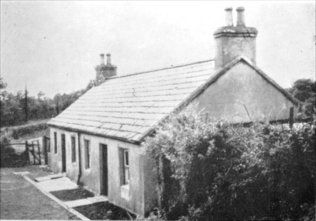
1859 Kells Schoolhouse where initial
prayer meetings were held.
►Around the Kells area, over 100 separate prayer meetings per week started, in homes, schools, barns, and work places—run by non-pastoral individuals.
►The revival spread to family by family, village by village, and town by town. The original young converts were instrumental in much of this work in the various towns.
►Within weeks 10,000 were converted.
►In Londonderry a daily prayer meeting of 5,000 was held and there were several services conducted every day.
►In Coleraine, united meetings of Churchmen, Presbyterians, Methodists, Independents, and Baptists were held. They were working together with one heart and soul. One said:
For the last three weeks it has been one continual Pentecost.
►Almost every street in Belfast saw conversions. The most notorious sinners, drunks, and prostitutes in the city were saved.
►Large open-air meetings of about 25,000 were held.
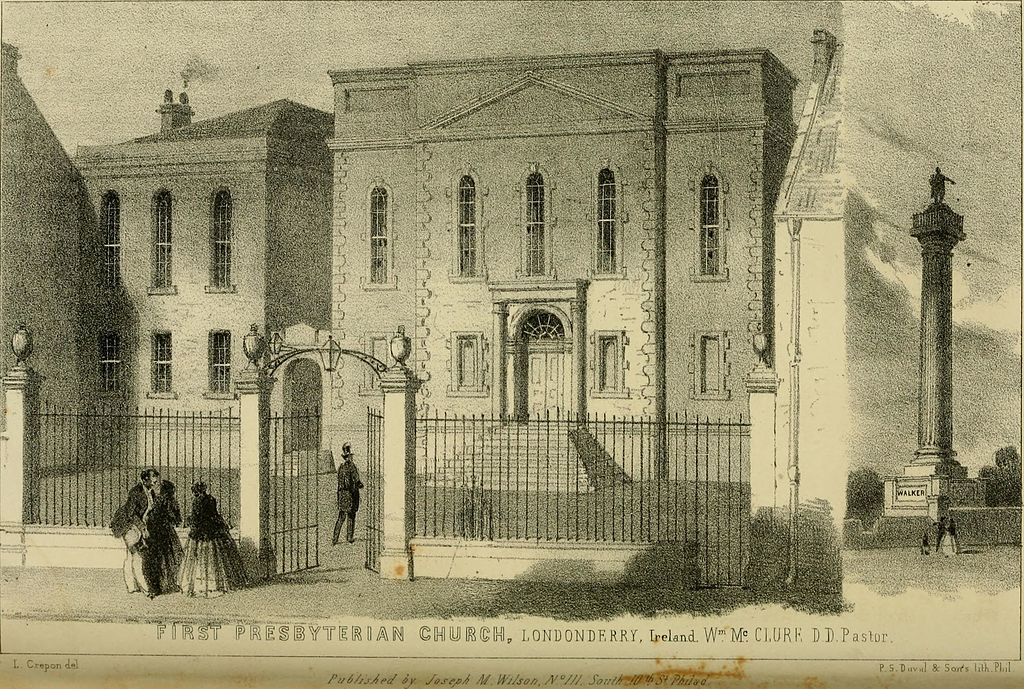
First Presbyterian Church of Londonderry (1859)
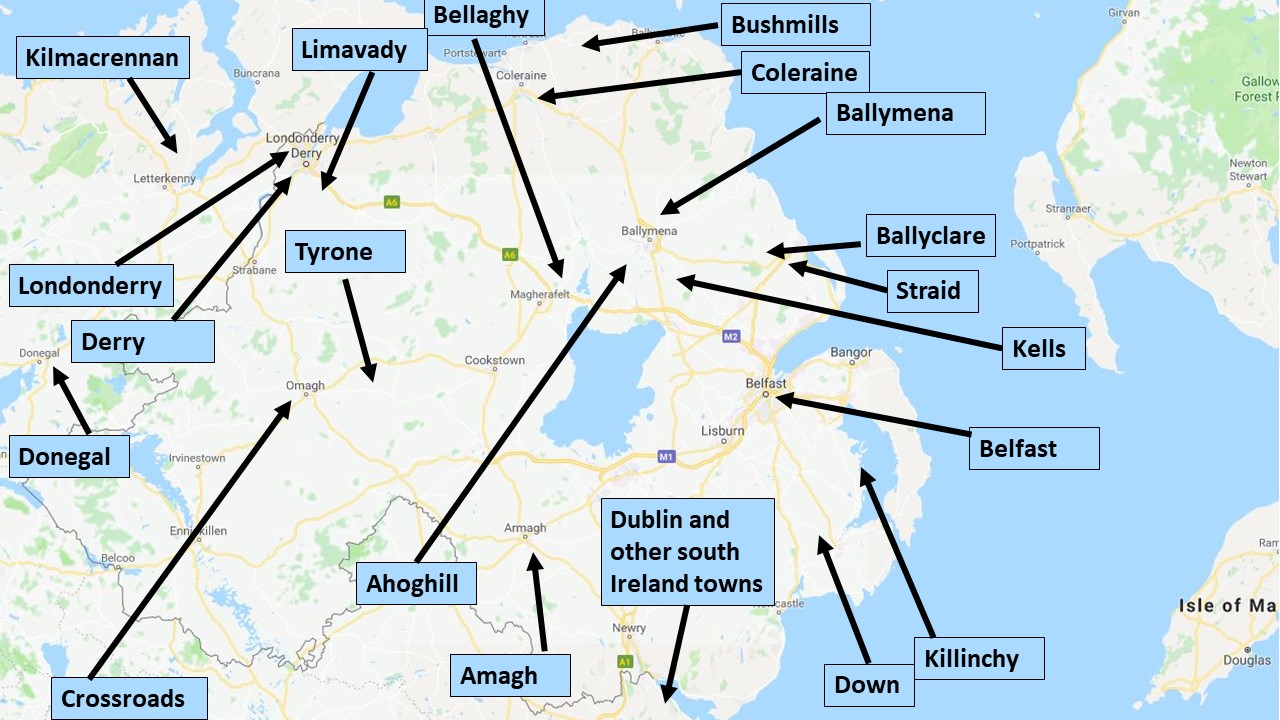
Ulster, with 20 locations where revivals were documented, though there were many, many more locations that experienced revival. This revival also spread to Wales, Scotland, England, Europe, and beyond.
Revivals are Contagious
The revival that was taking place in Ireland soon crossed the channel into Wales, Scotland, and England, where an even larger harvest of souls took place.
UK Wells mentions that;
Although McQuilkin was the brand who started things going; his minister, S J Moore organised many prayer meetings and created an environment in the church whereby the Lord could move powerfully.
Manifestation
►One unusual physical manifestation was prostrations, when men and women, sometimes great multitudes, would be struck down under the conviction and power of God. They would often cry out in agony of soul and would rise up again born-again, redeemed, and forgiven. Some were unable to rise for some time.
►Some fell into trances and others had visions. Others were temporarily struck dumb, blind, or paralyzed.
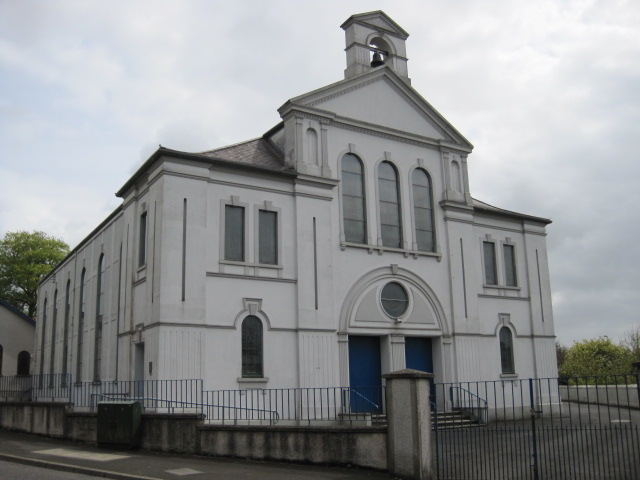
Connor Presbyterian Church
The initial prayer meetings were started in Kells and Connor, towns located next to each another.
The Results of the Revival
►100,000 converts in Ireland (one tenth of the total population) were added to the church.
►God’s Spirit moved powerfully in small and large gatherings bringing great conviction of sin, deep repentance, and lasting moral change.
►Wales also saw 1/10th of the total population turn to Christ (100,000)
►Scotland reported 300,000 conversions, and England had a much larger harvest than that.
►God raised up evangelists and missionaries who were sent out to England and around the globe.
►Crime dropped by half within months.
►Bars and distilleries were closed because of no customers.
►By 1860, judges in Ulster several times had no cases to try. At one time in Antrim County (one of 6 counties that make up Northern Ireland) no crime was reported to the police and no prisoners were held in police custody.
►More Catholics placed their faith in Christ alone in 1859 than in the previous 50 years.
►The Catholic Church sold Holy Water to protect their people from this strange work, or as they called it, “a revival devil…new work of the devil…an alarming contagious disease.” Even though they sold this water, they still warned their people that even the holy water could not protect them if they dared to attend any of the meetings.
►By the end of 1860 these effects of the Ulster revival were listed:
- Thronged services
- Unprecedented numbers in attendance
- Many prayer meetings
- An increase in family prayers
- Unmatched scripture reading
- Prosperous Sunday Schools
- Converts remaining steadfast
- Increased giving
- Vice and crime reduced
- The revival work continued throughout Europe, at least until 1874
- One minister said:
It were worth living ten thousand ages in obscurity and reproach to be permitted to engage in the glorious work of the last six months of 1859.
Sources
► 1859 Ulster Revival by Keith Malcomson
► 1859 Ulster Revival by Wikipedia
► The Second Evangelical Awakening in America by J. Edwin Orr
► The Revival in its Physical, Psychical, and Religious Aspects by W.M. Wilkinson
► The Ulster Revival of 1859 by William H. Harding
► The Year of Grace by William Gibson
► UK Wells website
Return to List of Revival Stories
Chet & Phyllis Swearingen:
Office: (260) 920-8248
romans1015@outlook.com
Beautiful Feet
P.O. Box 915
Auburn, IN 46706

